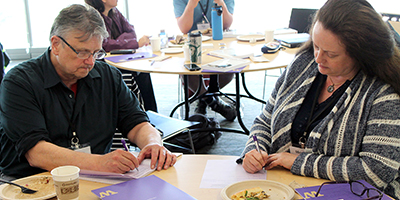Resources

The UW’s Accessible Technology website includes a variety of resources:
- the IT accessibility policy and guidelines for the UW
- legal issues and civil rights complaints and resolutions nationwide
- instructions and tips for making IT accessible
- more resources for creating and procuring accessible IT products
The DO-IT (Disabilities, Opportunities, Internetworking, and Technology) website contains the following:
- information about DO-IT projects
- evidence-based practices that support project goals and objectives
- resources for students with disabilities
- educational materials for teachers and administration
DO-IT maintains a searchable database of frequently asked questions, case studies, and promising practices related to how educators and employers can fully include students with disabilities. The Knowledge Base is an excellent resource for ideas that can be implemented in programs in order to better serve students with disabilities. In particular, the promising practices articles serve to spread the word about practices that show evidence of improving the participation of people with disabilities in postsecondary education.
Examples of Knowledge Base questions include the following:
- Are electronic whiteboards accessible to people with disabilities?
- Are peer review tools accessible?
- Do postsecondary institutions have to provide assistive technology (for example, screen enlargement or voice recognition software) to students with disabilities who enroll in distance learning courses?
- Does making our school web content accessible mean I cannot use multimedia on my site?
- How can educational entities determine if their websites are accessible?
Individuals and organizations are encouraged to propose questions and answers, case studies, and promising practices for the Knowledge Base. Contributions and suggestions can be sent to doit@uw.edu.
For more information on making your campus technology accessible and to learn more about accessible learning or universal design, review the following websites and brochures:
- The University of Washington’s hub for information on accessible technology, featuring how to create and develop accessible documents, videos, and websites, can be found at Accessible Technology.
- WCAG 2.0 are the expected guidelines to be followed for all websites.
- The Access Technology Center’s website.
- A list of thirty different web accessibility tips, and how to implement those tips, can be found at 30 Web Accessibility Tips.
- Accessibility training and certification.
- Cheat sheets for making accessible documents and content, as well as a plethora of other resources for accessible websites, can be found at The National Center on Disability and Access to Education.
- The AccessDL website shares resources for making distance learning and online courses accessible.
- Accessible University’s website featuring common web accessibility principles and solutions.
- A brochure on universally designing distance-learning programs can be found at Equal Access: Universal Design of Distance Learning Programs.
- A brochure on what accessible distance learning is and how it helps students can be found at Accessible Distance Learning.
- A brochure on the top tips for creating an accessible distance-learning course can be found at 20 Tips for Teaching an Accessible Online Course.
- More information on universal design in education can be found at the Center for Universal Design in Education.
Conferences can be a great way to share resources, collaborate, and come up with new ideas. Consider attending the following nation-wide conferences: